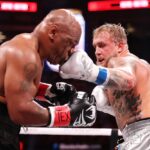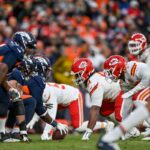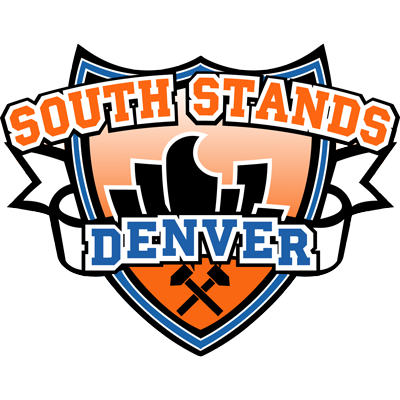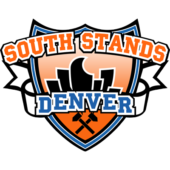What’s Wrong with the Denver Nuggets? And Where do We Go from Here? By @smooth_operatah
We’re thrilled to publish the first of what we hope will be many guest items from the best Nuggets analyst on Twitter, @smooth_operatah, who’s real name we do not know. All we know is that he’s good and that he knows the team inside and out.
Tonight he examines what the Nuggets should do with the 20th pick in the NBA draft and how the rest of the team should be constructed for the coming season.
Visit his WordPress, Smooth’s Moves RIGHT HERE
Read More…
Where does Denver go with the twentieth pick?
Following the surprising trade of longtime power forward/center Nene in March, their needs are wide-ranging.
There is currently one player on the roster that is absolutely untouchable. And that is Danilo Gallinari. He is a great player. But like every great player, he needs other great players surrounding him to maximize his potential. Trading Nene killed any and all potential growth Gallinari was to experience because it expedited his only solid pick-and-roll partner. When Denver was hot in late January, it was on the heels of Gallinari and Nene spearheading their attack. Gallo’s talents are best utilized when he’s manning the point-forward position. Nene was the only big on the team with the hands and skill capable of running with Gallinari, as evidenced by these stats.
This is why after the trade, Gallo’s utility went downhill. He was being put in situations unsuitable to his talents — as a post-player and isolation scorer. As such, this is the problem we run into with far too much frequency in Denver over the last decade: Players being put in uncomfortable positions and situations not relative to their talent.
Exhibit A
Nene Hilario was drafted out of Brazil in the 2002 draft. A 6-foot-11, 250 lb. phenom was ushered into Denver after a superb draft day trade by then Nuggets’ General Manager Kiki Vandeweghe. (The fact they also drafted Nikoloz Tskitishvili in the same year is something we’ll gloss over for the time being.) Where Denver, and most of all, Kiki, went wrong is when they followed that up two seasons later by signing Kenyon Martin to a max contract. The draft picks traded for the rights to Kenyon’s contract ended up being meaningless. Martin’s new contract, however, was not.
In July 2004, with Nene coming off two healthy seasons of great basketball, and at the mere age of 21, it seemed like a silly move to make Kenyon Martin one of the highest-paid players in the league. With Kenyon aboard making max money and Nene on the shelf for brief parts of the year, Martin was pushed into the starter’s role at power forward during the 2005 season. Marcus Camby (who had also just been re-signed) was perfect at center for a team led by the lax defense of prized-pupil Carmelo Anthony. But when Martin laid claim to the starter’s role at four, Nene was on the outside looking in. And Denver couldn’t trade Kenyon’s contract. They were absolutely hamstrung by it. Could they have handled it any better than they did? Could they have traded him to someone and gotten a schmuck back in return (in much the same way they did Nene for JaVale)? Could they have moved Martin to the bench while Nene and Marcus Camby formed one of the most dominant front courts in the game? Maybe. But hindsight is 20/20. Given the situation, they probably handled it to the best of their ability. Moving the highly volatile Martin to the bench would have upset an already tepid locker room even more. Moving him out of town would have been preferable. After all, they did this very thing to a great player just six years later.
The Kenyon signing was bad for everyone. But they handled it the best way possible. The NBA is a player’s league. As such, the players earning the most scratch will find the most time. Also, rarely is anything as easy as it seems.
However, there seemed to be no backup plan should this situation with Martin not work out. Which, during the 2006 playoffs, appeared to be near-certainty.
Exhibit B
Denver trades floor general and team glue-guy Andre Miller to the Philadelphia 76ers for guard Allen Iverson. This was a blockbuster deal in 2006 that brought much attention to the Mile Hi City. Who was going to get the ball in crunch-time? Iverson or Carmelo? How were they going to share one ball? Who’s team was it going to be? All of these questions and more were asked during the initial stages of the trade talks and beyond. What Denver ended up doing with this trade more damaging than anything else was ignore the fact they were moving their only NBA quality point guard for the volatile Iverson[1]. In their haste, they made a string of bad judgments that eventually caused major ripple-effects for the next half-decade:
Iverson was brought aboard and almost immediately took ownership of the team as Carmelo sat out a 15-game suspension for his participation in the brawl in New York on December 16, 2006.
Iverson’s need to have the ball in his hands to make plays left Anthony out in the cold, and thus, hindered his development as the premiere offensive threat he was destined to become. Carmelo was at one time talked up to be an MVP candidate; especially at the beginning of that 2006 season, when George Karl had his Nuggets cruising.
Denver had seemingly no backup plan in the works for their newfound hole at point guard as they took nearly a full month to find Miller’s replacement in the Milwaukee Bucks’ Steve Blake. Blake was a good temporary stop-gap. But was he the answer long-term for Denver? Most certainly not.
Anthony Carter was brought in that April for the playoffs. He was retained in the summer for the veteran’s minimum. Chucky Atkins was also signed that summer in the hopes that he would take command of the team’s starting point guard role. He never materialized as questions about his health took more time to answer than whatever scant amount of minutes he found on the floor. Heady young point guard Mike Wilks was signed, then released, then re-signed, then released.
The whole 2007 season was played with Anthony Carter at point guard. Anthony Carter would have been lucky to get off the bench in most NBA cities. Yet here he was starting at point guard for a franchise that had Marcus Camby, Carmelo Anthony, Allen Iverson, and Kenyon Martin in its arsenal (along with Nene Hilario and J.R. Smith off the bench.) Would you hire a 15 year-old with his learner’s permit to park your ’69 Shelby GT Mustang? Of course you wouldn’t. You’d be fucking insane to. And so Denver once again had a player contributing where he should not have even been considered an option.
Backup plans? Contingency plans? Anything?
Exhibit C
Three games into the 2008 season saw the beginnings of what could have become a franchise-changing trade. Denver was able to move Iverson to the Detroit Pistons for hometown hero Chauncey Billups. The Chauncey Billups era was on. Denver had finally found their point guard. He was going to remain in Denver until he retired and then move into the front office in an advisory role. It was going to be the perfect storybook ending to what would hopefully become a Hall-of-Fame career. The addition of Billups had an almost surreal and immediate impact on Denver’s fortunes. Everyone moved back to their natural positions. Chauncey was the guard who could score and facilitate. Dahntay Jones was a defensive stopper. Kenyon Martin (as unskilled and passably awful as he was on offense) was the defensive quarterback. And Nene Hilario and Carmelo Anthony would flourish on the offensive end with Chauncey getting them the ball in their spots for maximum success. Chauncey was the vice-president to George Karl’s bench presidency. He wasn’t going to be as sneaky-good as Andre Miller was. But he was going to provide the team with the necessary structure to make up for whatever George Karl lacked from the sidelines. He made certain there were diagramed plays called out of timeouts (something I’m still not certain George Karl has taken the onus of implementing). He made certain the matchup advantages were there for Denver to capitalize on when they arose. He brought a thinking-man’s game to Denver. Where Andre Miller was more laissez-faire, Chauncey was more cerebral. The pull-up jumpers in transition he was so famous for were something Denver greatly needed, as they were a manifestation of his thinking on the floor — automatic and natural.
Denver made the 2009 Western Conference Finals. But rather than keep the team that brought the most success to Denver in twenty-five years, they jettisoned Dahntay Jones for nothing. His physical presence and defensive leadership from both the court and the bench were sorely missed the next year when George Karl fell ill to cancer. Arron Afflalo, a seemingly large upgrade, was brought in from Detroit in Jones’s stead. That is all fine and good, but, why mess with what brought you your greatest success?
Backup plans? Contingency plans? Considering every possible potentiality? I’m sensing a theme here.
Exhibit D
Marcus Camby is traded to the Los Angeles Clippers for 2010 second round pick (Willie Warren). Denver, once again, had moved one of their better pieces in the hopes that their prized-big man Nene would just slide over to center in Camby’s absence. They not only made this trade with that in mind, they moved Camby for absolutely nothing. Knowing Chris “Birdman” Andersen was waiting in the wings (no pun intended) they made the move with Andersen’s bench role firm. Camby was gone. Nene was now going to play center – not his natural position. (The fact that the Washington Wizards, immediately after acquiring Nene, made a move to get Emeka Okafor at center so they could move Nene to his natural position at power forward is also something we’ll gloss over for the time being).
What now?
What could have been? When is Denver going to be held accountable for these decisions? When are those in charge of making these decisions going to have to answer for them? Why was Nene constantly put in situations where he was unable to maximize his success? Why was he always allowed to be the scapegoat when success didn’t materialize for him or the franchise even though he was never in his best possible position?
How does a Western Conference Finals team get totally dismantled in less than three years?
Why is Carmelo Anthony traded even though every indication early in the 2009-10 season showed he wanted to remain in Denver? What changed for him? Did he catch wind that some in the front office wanted him traded? Did he then feel like maybe his services were no longer appreciated in Denver and decide New York was a better option?
How in God’s name is Nene moved a mere three months after signing a new contract even though he’s coming off his three healthiest seasons as a pro? He missed some games during a lockout-shortened season. Now is the time to usher him out of Denver? Why did the Denver front office freak out and trade him for a project at center in JaVale McGee?
Why was Chauncey Billups included in the Carmelo Anthony trade when the players that made the trade bigger were simply filler? Why was Wilson Chandler included when he should barely be getting off the bench for a team in the NBA? Is Chandler another in a long line of players who are only successful in Mike D’Antoni’s system? Why was he then granted a new contract in Denver and then not able to play for the duration of the season after getting hurt? Can he not be traded like Nene was for similar reasons?
At what point do the players traded stop being the scapegoat and the people in charge of moving them take responsibility? When is the franchise going to have any form of stability? When will their best players be identified for being so and held onto for the duration of their careers?
What are they doing? Is Ty Lawson truly the point guard of the future for the Denver Nuggets? Is JaVale McGee truly the center of the future for the Denver Nuggets? Given that he was only allowed twenty or so games in a lockout-shortened season to showcase his talents, I’m not sure we are in any position to answer that question. Can Danilo Gallinari reach his greatest success without a viable big man to run pick-and-rolls with in the rotation? What is this team doing with Timofey Mozgov – the guy supposedly holding up the Carmelo trade in the first place? The Russian big man with the most skill of anyone on the roster is being ill-used and ill-fitted to maximize his own potential. Is he being coached to become a post-option? And what about Kenneth Faried? Is he a starter in the NBA? Can his superior rebounding abilities allow his massive deficiencies in other areas to be overlooked? Those questions and more will be answered on Monday in part two.
Because how can any player possibly be drafted if we don’t know whether or not they’ll be used correctly in the first place?






